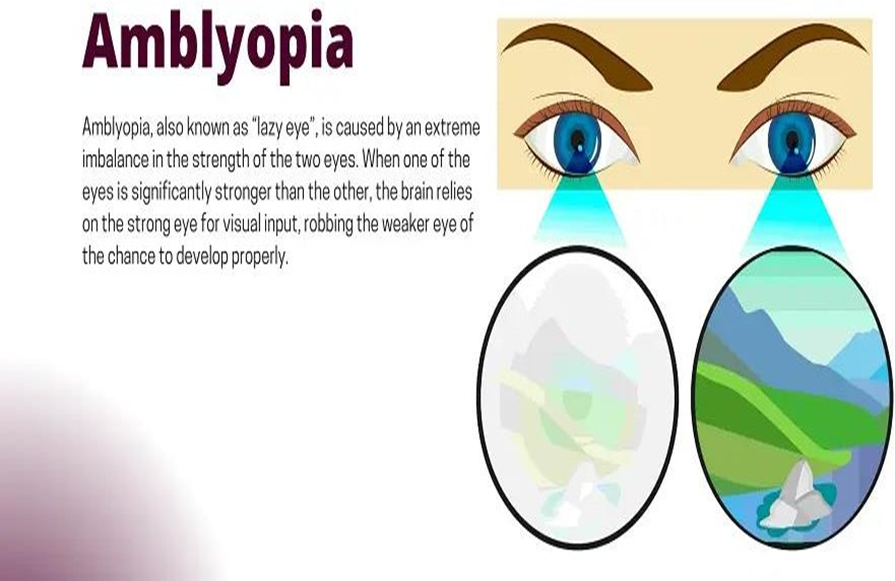The school nurse is conducting vision screening for a 7-year-old girl and documents the condition "amblyopia." What would the nurse tell the parents about this condition?
"Amblyopia is reduced vision in an eye that has not been adequately used during early development."
"Amblyopia is a malalignment of the eye, which occurs at birth."
"Amblyopia is an uncorrected refractive error of the eye."
"Amblyopia is a clouding of the lens of the eye caused by trauma to the eye."
The Correct Answer is A
A. Amblyopia, often referred to as "lazy eye," is reduced vision in one eye due to abnormal visual development during early childhood.
B. Malalignment of the eyes typically refers to strabismus, not amblyopia.
C. Refractive errors such as myopia or hyperopia can cause visual impairment but are not specifically related to amblyopia.
D. Clouding of the lens of the eye is more commonly associated with conditions like cataracts, not amblyopia.

Nursing Test Bank
Naxlex Comprehensive Predictor Exams
Related Questions
Correct Answer is D
Explanation
A. While acknowledging the father's concerns is important, this response doesn't provide guidance on addressing potential depression in the son.
B. Offering to refer the son for evaluation with a therapist if mood issues are noticed is important and provides proactive support and guidance for addressing potential depression but screening children with a risk factor for depression from the age of 11 is the best choice.
C. While regular screening may be indicated for at-risk teens, waiting until age 14 may miss opportunities for early intervention in some cases.
D. Screening for depression is recommended for all children aged 11 and older, especially those who have a family history of depression or other risk factors. The nurse should inform the father that screening his son for depression is important and can help identify any signs or symptoms early. This is based on the recommendations of the American Academy of Pediatrics, which state that pediatric primary care providers should screen all children and adolescents for depression at least once a year, starting from age 11.
Correct Answer is A
Explanation
A. Presenting food matter-of-factly and allowing the child to choose what to eat can help promote autonomy and reduce mealtime stress, encouraging healthier eating habits over time.
B. Allowing the child to pick out foods for meals may reinforce picky eating habits and may not necessarily promote balanced nutrition.
C. Offering high-fat snacks to entice the child to eat may reinforce unhealthy eating habits and may not address the root causes of picky eating.
D. Offering a special treat as a reward for eating all the food on the plate may create an unhealthy association with food and may not promote long-term healthy eating habits.
Whether you are a student looking to ace your exams or a practicing nurse seeking to enhance your expertise , our nursing education contents will empower you with the confidence and competence to make a difference in the lives of patients and become a respected leader in the healthcare field.
Visit Naxlex, invest in your future and unlock endless possibilities with our unparalleled nursing education contents today
Report Wrong Answer on the Current Question
Do you disagree with the answer? If yes, what is your expected answer? Explain.
Kindly be descriptive with the issue you are facing.
